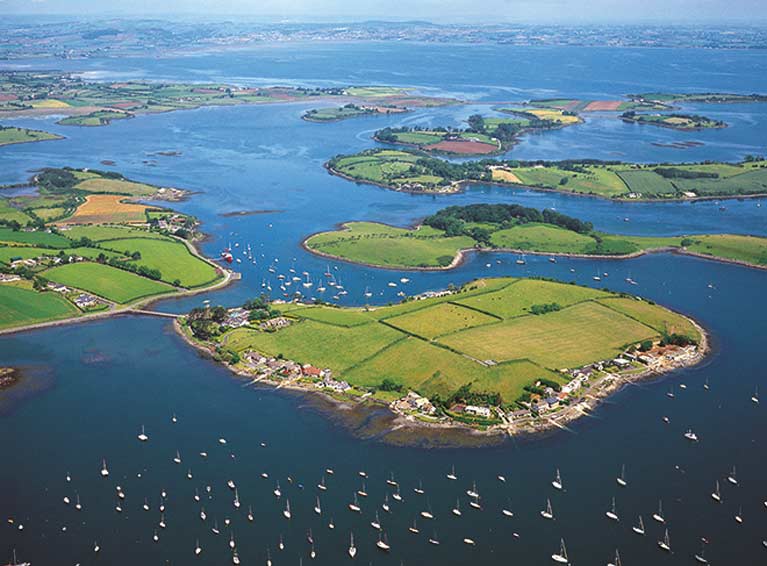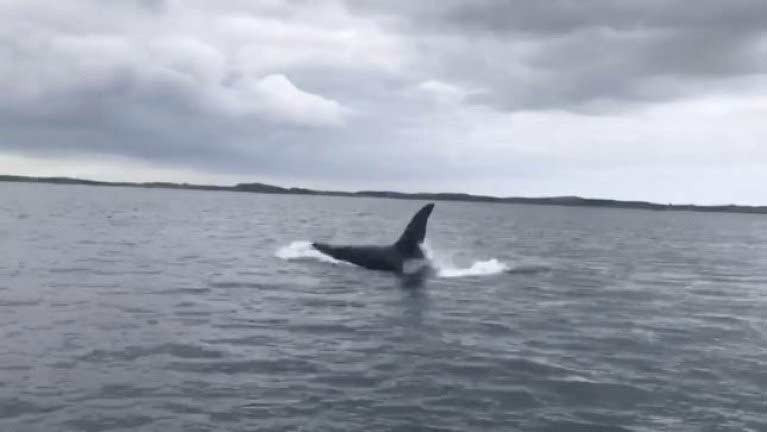As sailors, if we want to preserve our playgrounds, or at least slow their destruction, we have to talk to others writes Strangford Lough's Robbie Gilmore
While I was at school, I gave a speech about a voyage my Dad and I’d undertaken from Strangford Lough to Wales. Now, coincidentally, on the voyage, I’d spotted some whales. Unfortunately, I thought I could turn this into a joke. The punchline went something like this:
‘We were just leaving the mouth of Strangford Lough. I was up on deck, keeping watch. My Dad was down below, at the navigation table. Suddenly, I saw two fins slicing up out of the water, just in front of the bow.
“Whales!” I shouted
“No it’s not,” my Dad replied, “not on my chart anyway!”’
I spread my arms wide and paused for effect (like I’d practised in front of the mirror every night for the preceding two weeks), waiting for the wave of laughter. Somebody blew their nose at the back of the assembly hall. Then there was an overwhelming silence.
 Strangford Lough from the air
Strangford Lough from the air
Later, I asked my friends where it had gone so wrong. ‘It’s just not believable Rob,’ they said. ‘Whales in the Irish sea? Don’t be ridiculous. You only get whales in places like the Canaries and stuff. I saw one on my holiday to Tenerife last year. You don’t get them in this part of the world.’
I told them it was true: I really had seen a whale off the Irish coast! They thought that was a pretty good joke.
But finally, ten years later, I’m vindicated. Last week the whales were back, all the way inside Strangford Lough, surrounded by photographers and pleasure boats, their arrival quickly splashed across social media.
They were two Killer Whales; creatures most people have only seen on David Attenborough programmes. Their arrival was a reminder of natural majesty we have right on our doorstep. But it was also a reminder of its fragility.
Those two whales are both males; the last members of a pod that live in the northern Irish Sea. Once they’re dead, the pod will be extinct. It is suspected that the pod failed to reproduce (when females were still alive), due to toxic heavy metal pollution in our waters, causing infertility.
"Can you imagine having a pissing section in a swimming pool?"
As sailors, the arrival of those whales into Strangford Lough, and their back story, should remind us of two things: First; the interconnectedness of our oceans. Can you imagine having a pissing section in a swimming pool? (I’m going to go out on a limb and guess the answer is no…)
Now, how do you feel about industrial waste being released into our oceans? What about sewage? How about nuclear dumping?
Strangford Lough – my home – is a national park, and heavily protected. But thanks to heavy metal pollution, from industrial plants somewhere else, there will be no killer whales in Strangford Lough when my children ply its shores.
Pollution there means destruction here.
If we want to protect our playgrounds, we must stand against environmental destruction everywhere.
Second; our close connection with the natural world gives us unique insights. We see the impacts that industrial capitalism is having on our planet, first hand.
A key reason for escalating environmental destruction is that people are less connected to nature, and therefore can’t see the damage that is being done. Sailing involves a direct connection with the natural world. In the modern world, that’s pretty unique. We have to make use of that unique perspective, to inform other people about the catastrophe that’s unfolding.
As sailors, if we want to preserve our playgrounds, or at least slow their destruction, we have to talk to others. Explain what’s happening to others. Describe the majesty of the seas we love; emphasise their fragility; campaign for their protection.
When we do so, people may laugh. Let them.
We’ll be vindicated, in the end.
As the often-quoted line goes: “First they ignore you, then they laugh at you, then they fight you, then you win.”































































